| Class: | angiosperms |
| Order: | Gentianales |
| Family: | Asclepiadaceae |
| Genus: | Cynanchum |
| Scientific name: | Cynanchum sibiricum Willd. |
| Name acc. to: | Gubanov 1996 |
| Herbar: | list records  |
| Description: | Pant with long twining stem, sparsely pilose or subglabrous. Leaves sagittate-cordate, with narrow-triangular attenuate-acuminate upper part and large auricle-shaped, widely divergent, orbicular basal lobes. Flowers small, pink, staminate corona tubular, scarious, with external and internal appendages. |
| Link to Flora of China: | http://www.efloras.org/browse.aspx?flora_id=2&name_str=Cynanchum |
| open map in a new window |  |
| Habitat: | Fixed, hillocky and thin sands, alkaline chee-grass stands, sondoks, sandy tailings and debris slopes, sandy-pebble bottom of sayrs (Grubov 2001). |
| Habit (i)general appearance of a plant | |
| Growth form: (i)Herb, shrub, tree or climber. | herb (i)Herbaceous, erect plant, up to 2m high, mostly with a leafy shoot; if perennial, shoots die to the ground each season, shoots are not woody
example: Artemisia pectinata   inherited by family Asclepiadaceae: herb inherited by family Asclepiadaceae: herb
|
| Smell & Touch: (i)General appearance of the plant. | abundant milky juice (latex) (i)Shoots and often leaves contain white or yellowish latex
example: Asclepiadaceae, Euphorbiaceae, Lactuca tatarica  inherited by family Asclepiadaceae: abundant milky juice (latex) inherited by family Asclepiadaceae: abundant milky juice (latex)
|
| Parasite status: (i)Is the plant a half- or full parasite? | no parasite/saprophyte (i)Plant fully autonomous, leaves with chlorophyll
example: Most plants, Ranunculus  inherited by family Asclepiadaceae: no parasite/saprophyte inherited by family Asclepiadaceae: no parasite/saprophyte
|
| Water or terrestrial plant: (i)Where do the plants grow? | terrestrial (i)Plant grows on dry land
example: Orostachys spinosa  inherited by family Asclepiadaceae: terrestrial inherited by family Asclepiadaceae: terrestrial
|
| Leaf (i)expanded, usually photosynthetic organ of a plant (including phylloclades) | |
| Leaf development: (i)Structure and development of leaves. | with green leaves (i)Plant with green leaves  inherited by family Asclepiadaceae: with green leaves inherited by family Asclepiadaceae: with green leaves
|
| Leaf arrangement: (i)Arrangement of leaves at the stem. | opposite, opposite-decussate (i)Two leaves per node
example: Lamiaceae, e.g. Phlomis    inherited by family Asclepiadaceae: opposite, opposite-decussate inherited by family Asclepiadaceae: opposite, opposite-decussate
|
| Simple or divided leaves: (i)Are the leaves simple or completely divided in several parts? Blade of the leaf entire or (more or less) deeply dissected. Attention: There are various appearances of the leaf margin (from entire to toothed and lobed). Here, we ignore this and ask only for dissections that separate the leaf for more than one third of its length or width, whatever is smaller. Sometimes, it is difficult to tell apart compound leaves from a shoot system with simple leaves: look for stipulae and/or axillary buds at the ground of the leaves: if only some possess these structures, the others are most likely leaflets of a compound leaf. | simple (i)Non-divided leaf, but margin may be incised nearly to the ground   inherited by family Asclepiadaceae: simple inherited by family Asclepiadaceae: simple
|
| Petiole: (i)Leaf divided into stalk (petiole) and blade. | with (i)Leaves with petiole (stalk)   inherited by family Asclepiadaceae: with inherited by family Asclepiadaceae: with
|
| Stipule: (i)Leaflets at the base of the petiole, these are smaller and of different shape. | none (i)Without stipules
example: Euphorbia, Ericaceae s.l.  inherited by family Asclepiadaceae: none inherited by family Asclepiadaceae: none
|
| Leaf veination: (i)Arrangement of the main veins of a leaf. | pinnate (i)One main vein, several side veins, sometimes inconspicuous
example: Cicerbita     inherited by family Asclepiadaceae: pinnate inherited by family Asclepiadaceae: pinnate
|
| Flower (i)reproductive portion of the plant, consisting of sepals, petals, stamens, and pistils | |
| Flower appearance and pollination: (i)General appearance of the flower. | attractive, animal-pollinated (i)attractive and coloured flowers, mostly large, attracting surely animals
example: Trollius, Rosa, Chamaerhodos  inherited by family Asclepiadaceae: attractive, animal-pollinated inherited by family Asclepiadaceae: attractive, animal-pollinated
|
| Perianth arrangement: (i)Attention: in some plants, flowers may be dimorphic in different ways (dioecious or gynodioecious). If flowers vary, record the characters of the most showy flowers. | double, different (i)Two types of perianth leaves, differently coloured (sepals: outer periant leaves, usually greenish, and petals: inner perianth leaves, usually coloured)
example: Parnassia    inherited by family Asclepiadaceae: double, different inherited by family Asclepiadaceae: double, different
|
| Flower symmetry: (i)Symmetry of the perianth leaves. Attention: to assess this character, look on sepals, petals and stamens, but neglect carpels and ovary. | radiary, regular (actinomorphic) (i)More than two axis of symmetry
example: Saxifraga: 5; Iris: 3   inherited by family Asclepiadaceae: radiary, regular (actinomorphic) inherited by family Asclepiadaceae: radiary, regular (actinomorphic)
|
| Sepal number: (i)Number of sepal leaves (outer perianth leaves, calyx leaves, mostly greenish). Attention, this character applies only for flowers separated in sepals and petals, thus excluding most monocots. Be aware of the bracts (involucral leaves) of Asteraceae flowerheads, do not qualify these as sepals! Be also aware in Rosaceae is often an epicalyx developed, in this case count all parts. | 5 (i)
example: Polemonium  inherited by family Asclepiadaceae: 5 inherited by family Asclepiadaceae: 5
|
| Petal / Tepal number: (i)Number of petal leaves (inner perianth leaves, usually coloured). | 5 (i)
example: Potentilla  inherited by family Asclepiadaceae: 5 inherited by family Asclepiadaceae: 5
|
| Petal / Tepal fusion: (i)To which degree are the petal leaves connected? Petals sympetalous. | fused at base (i)petal leaves with a joint base, but fused over not more than 50% of the entire length
example: Myosotis, Pedicularis, Cortusa  inherited by family Asclepiadaceae: fused at base inherited by family Asclepiadaceae: fused at base
fused (i)petal leaves united, only tips are free (gamopetalous, sympetalous)
example: Linnaea, Adenophora, Stellera  inherited by family Asclepiadaceae: fused inherited by family Asclepiadaceae: fused
|
| Spur: (i)A hollow, slender, sac-like appendage of the perianth leaves, storing nectar. | no spur (i)Flower without appendage
example: Peganum  inherited by family Asclepiadaceae: no spur inherited by family Asclepiadaceae: no spur
|
| Stamen number: (i)Attention: We ask for the reproductive organs of the flower dispersing pollen. Count only fully fertile stamens, not staminodia (e.g. Parnassia). | 5 (i)
example: Peucedanum  inherited by family Asclepiadaceae: 5 inherited by family Asclepiadaceae: 5
|
| Stamen fusion: (i)To which degree are the stamens fused? Attention: Whereas the pollen sacs itself are often free., their stalks (filaments) may be fused. Here, we count them as fused if they are together over at least one thirth of their length. | fused with each other (i)All or most stamens fused with each other to a tube-like structure
example: Caragana, Petasites  inherited by family Asclepiadaceae: fused with each other inherited by family Asclepiadaceae: fused with each other
|
| Pistil number: (i)Number of pistils (female floral organs: style, if developed; stigma and carpels/ovary together build the pistil). | 1 (i)One carpel, but clearly one stigma
example: Pyrola, Primula, Alyssum  inherited by family Asclepiadaceae: 1 inherited by family Asclepiadaceae: 1
|
| Carpel fusion: (i)To which degree are the carpels (modified leaf forming simple pistil or part of a compound pistil) fused. | fused (i)Carpels united into an ovary, only styles are free
example: Malus, Berberis  inherited by family Asclepiadaceae: fused inherited by family Asclepiadaceae: fused
|
| Style number: (i)Portion of the pistil connecting the stigma to the ovary. | 1  inherited by family Asclepiadaceae: 1 inherited by family Asclepiadaceae: 1
|
| Ovary position: (i)For entirely or partly fused carpels, describe their position in relation to the insertion point of perianth leaves (best done by doing a longitudinal section of a flower). | superior (hypogynous) (i)Base of carpels attached above insertion point of perianth leaves, carpels free or fused
example: Delphinium, Anemone    inherited by family Asclepiadaceae: superior (hypogynous) inherited by family Asclepiadaceae: superior (hypogynous)
|
| Sex: (i)Distribution of male and female organs among flowers, only most commonly cases. | bisexual, hermaphrodite (i)All or nearly all flowers of a plant with male and female parts
example: Haplophyllum, Chenopodium  inherited by family Asclepiadaceae: bisexual, hermaphrodite inherited by family Asclepiadaceae: bisexual, hermaphrodite
|
| Inflorescence (i)flowering part of a plant, describes the arrangement of the flowers on the flowering axis | |
| Inflorescence: (i)Structure of the inflorescence. | Flowers in inflorescence (i)No solitary flowers  inherited by family Asclepiadaceae: Flowers in inflorescence inherited by family Asclepiadaceae: Flowers in inflorescence
|
| Fruit (i)the seed bearing organ, with or without adnate parts; a ripened ovary and any other structures which are attached and ripen with it. Aggregate fruits are handled like simple fruits for determination. | |
| Consistency: (i)Fleshy fruits or dry fruits, see dispersal adaptations for further classification. | dry (i)With a dry outer shell, no fleshy parts, but seed (embryo) could be edible  inherited by family Asclepiadaceae: dry inherited by family Asclepiadaceae: dry
|
| Type of fruit: (i)Common fruit types (including pseudocarp). | Solitary fruits (i)     inherited by family Asclepiadaceae: Solitary fruits inherited by family Asclepiadaceae: Solitary fruits
follicle (i)A pod arising from a single carpel, opening along a single side (the inner suture to which the seeds are attached)     inherited by family Asclepiadaceae: follicle inherited by family Asclepiadaceae: follicle
Dehiscent fruits (i)Fruits open along a longitudinale line (except silicula)  inherited by family Asclepiadaceae: Dehiscent fruits inherited by family Asclepiadaceae: Dehiscent fruits
|
| Opening of fruit: (i)Mode of dehiscence at maturity to release seeds. | opening / dehiscent (i)Dry? Fruits opening with different types  inherited by family Asclepiadaceae: opening / dehiscent inherited by family Asclepiadaceae: opening / dehiscent
|
| Root / shoot below ground (i)plant part below ground (in most cases), including below ground shoots, without leaves | |
| Root type: (i)Organisation of the roots. | allorhizous (i)Plant with a conspicuous tap root, one larger tap root with side roots
example: Dicotyledonae  inherited by order Gentianales: allorhizous inherited by order Gentianales: allorhizous
|
| Distribution (i)region where the plant is likely to be found | |
| Distribution (Veg. Zones): (i)acc. to Grubov 1952 | Depression of Great Lakes (i)In distribution data often named as '10' 
Valley of Lakes (i)In distribution data often named as '11' 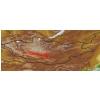
East Gobi (i)In distribution data often named as '12' 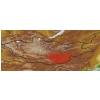
Gobi-Altai (i)In distribution data often named as '13' 
Dzungarian Gobi (i)In distribution data often named as '14' 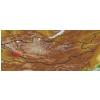
Transaltai Gobi (i)In distribution data often named as '15' 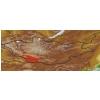
Alashan Gobi (i)In distribution data often named as '16' 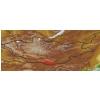
acc. to: Gubanov 1996 |